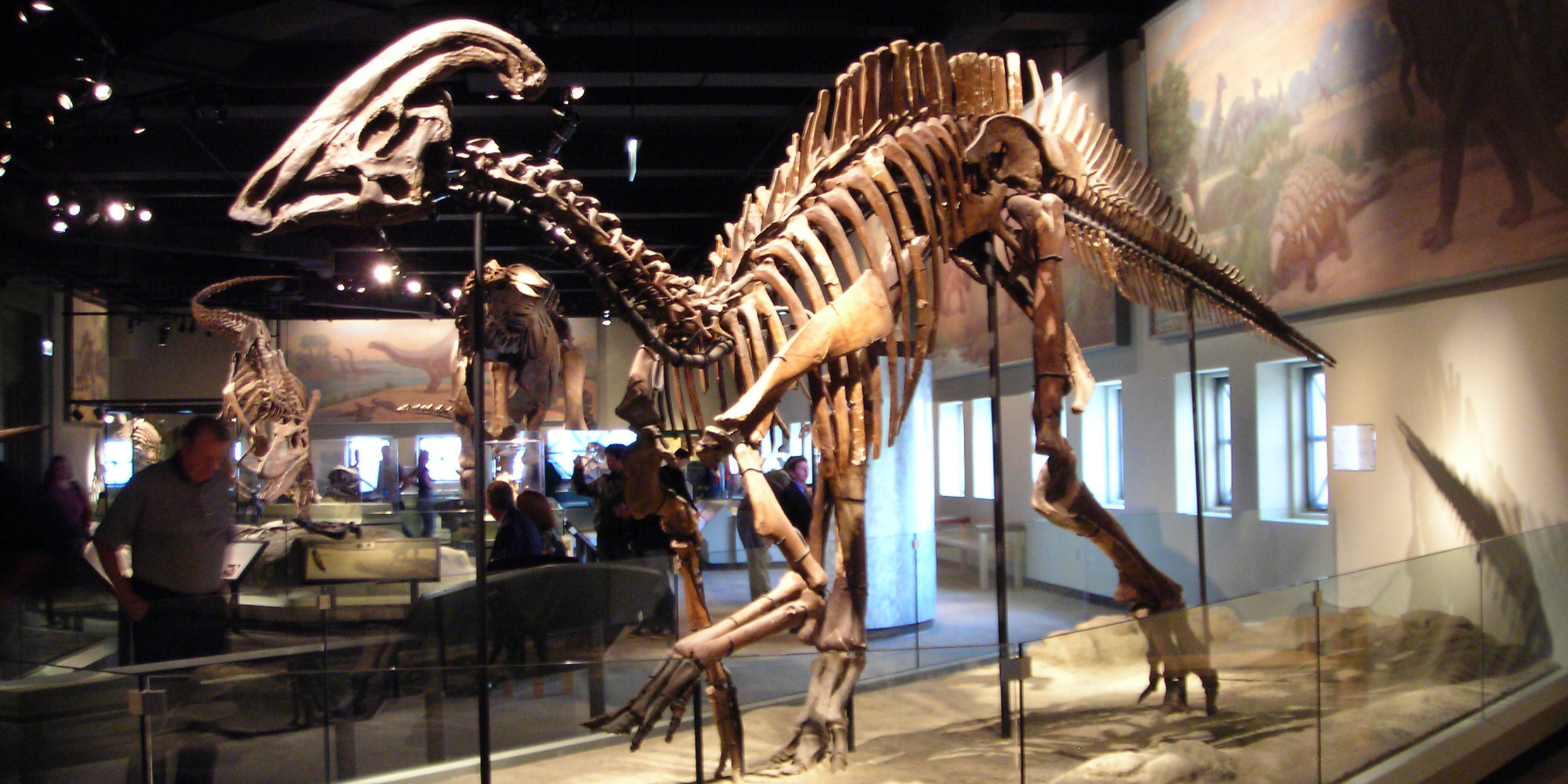Originally published 12 January 1987
“Big-Game Hunters From Mars Gunned Down Our Dinosaurs,” screamed the banner in the tabloid at the supermarket checkout counter. The story under the headline described fossilized dinosaur skulls supposedly found in France that are pierced by neat round holes. Embedded in the same strata of rock, according to the story, were projectiles that match the holes in size and shape. The projectiles contain trace amounts of minerals the Viking 1 space probe found on Mars.
“Our giant reptiles were helpless against the alien onslaught,” the breathless report concluded.
This utterly ludicrous story captures our preoccupation with the creatures that ruled the Earth for 150 million years before becoming suddenly and mysteriously extinct at the end of the Cretaceous Period of geologic history 64 million years ago. Kids have always been fascinated by dinosaurs; now everyone else seems to be getting in on the act. Dinosaurs jump out of magazine ads and cinema screens. Dinosaur exhibits in museums are enormously popular. Stores selling nothing but dinosaurian paraphernalia have opened.
And scientists, too, have been on a dinosaur kick. In the past decade paleontologists have made a series of remarkable fossil discoveries that challenge traditional wisdom about dinosaurs. Gone are the lumbering, dim-witted, cold-blooded brutes of our childhood. It now appears that the dinosaurs were brighter and more agile than we gave them credit for.
Cared for their young
And less terrible. Paleontologist Jack Horner has excavated dinosaur nesting grounds in Montana that have allowed a partial reconstruction of the social life of dinosaurs. Apparently juvenile hadrosaurs (duck-billed dinosaurs) were cared for in the nest by their parents until mature enough to forage alone. One or both parents carried seeds, berries, and vegetation to the hatchlings. An illustration for an article by Horner in Scientific American a few years back showed a sweet-faced mother hadrosaur escorting her brood of young “hadrosaurlings” as solicitously as the well-known mother mallard of children’s literature tended her ducklings on Boston Common.
Which may not be so surprising, because many evolutionary biologists now believe that ducks, and other birds, are the direct descendants of feathered dinosaurs that somehow survived the extinctions at the end of the Cretaceous. The dinosaur ancestor of the birds may have been similar to the present-day secretary bird of South Africa, a long-legged, fleet-footed predator that feeds upon ground-dwelling reptiles.
Paleontologist Robert Bakker believes that dinosaurs, like birds, were endotherms (warm-blooded). We used to imagine that dinosaurs were cold-blooded creatures, like snakes or crocodiles, that got stiff and lethargic whenever the temperature took a dip. A cooling climate was sometimes put forward as the cause of the dinosaur extinctions. But Bakker contends the dinosaurs had the ability to regulate their body temperature, and were quite adaptable to climatic change.
The gist of his argument is this: Dinosaurs held the early mammals in check for tens of millions of years. Cold-blooded animals could not have competed so well for so long against the endothermic mammals.
Bob Bakker is probably the liveliest iconoclast in dinosaur research today. His book, The Dinosaur Heresies, is as good a read in science as you will find.
Sudden extinction
Of course, the most provocative of all recent discoveries relating to dinosaurs is the account of their demise, a story hardly less startling than “news” of big-game hunters from space. In 1980, Luis Alvarez and others presented evidence that the widespread plant and animal extinctions at the end of the Cretaceous, which included all dinosaurs (except, presumably, the ancestors of the birds), were caused by the collision with Earth of a big meteor from space. The impact, the theory goes, raised a huge amount of dust into the atmosphere that cast the planet into cold and darkness for months or years, so that plants could not photosynthesize and the food chains collapsed.
The extinction of the dinosaurs allowed mammals to diversify and rise to dominance. Although still controversial, the meteor-impact theory has gained widespread support.
Several species of dinosaurs that lived at the time of the extinctions had brain weight-to-body weight ratios that were the equal of the early mammals. They were apparently quick, resourceful and smart. Some scientists have suggested that if it had not been for the mass extinction event of 64 million years ago, dinosaur evolution might have continued to hold the mammals in check.
It is not entirely the stuff of supermarket tabloids to imagine that if it weren’t for a meteor from space the dominant animal on Earth today might be a species of dinosaur, and I would be addressing these observations on revisionist theory to an audience of green-skinned, scale-covered, highly intelligent reptilian readers.



